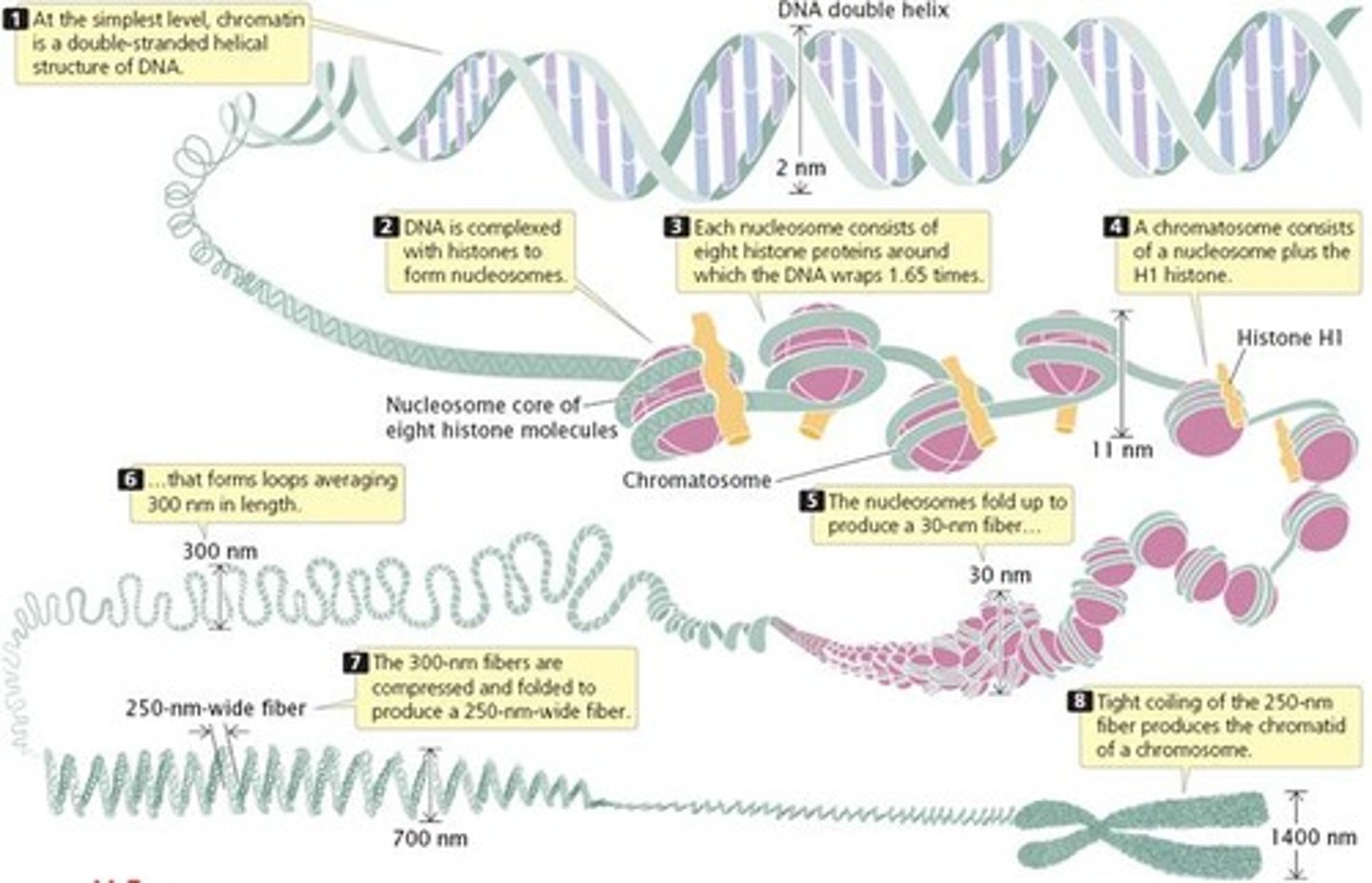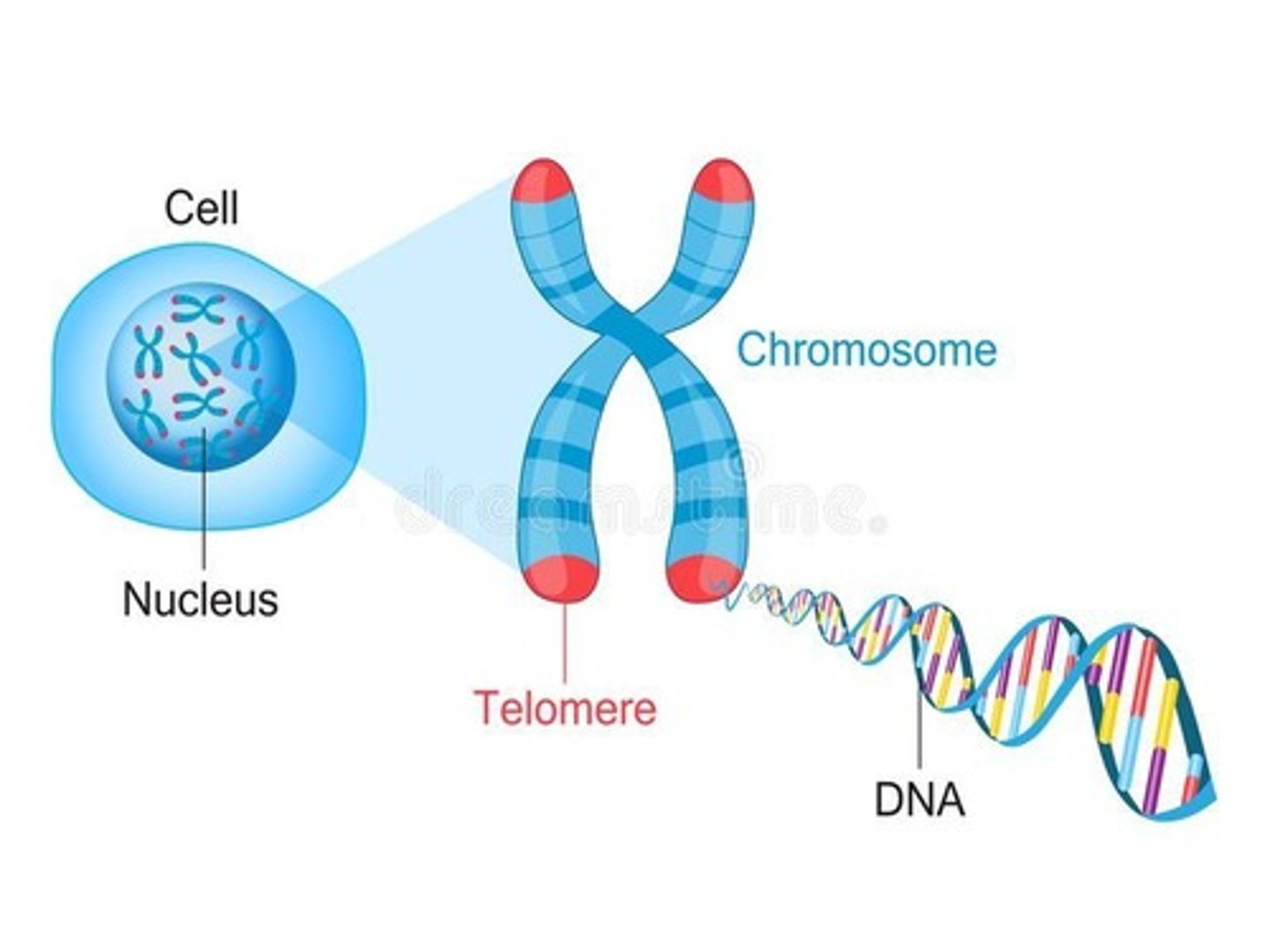DNA Organization, Telomeres, and Telomerase in Eukaryotes and Prokaryotes
1/16
There's no tags or description
Looks like no tags are added yet.
Name | Mastery | Learn | Test | Matching | Spaced |
|---|
No study sessions yet.
17 Terms
Eukaryotic DNA Organization
Negatively charged DNA is wrapped around positively charged histone proteins.

Nucleosome
8 Histone proteins combine to form a Nucleosome which helps to wrap DNA.
Solenoid
6 nucleosomes are further condensed to form solenoids (also called chromatin fibres).
Chromatid
Solenoids form one chromatid.
Chromosome
Two chromatids make one chromosome.
Prokaryotic DNA Organization
Commonly only one chromosome that can be circular.

Plasmids
Smaller pieces of DNA float throughout the cell and are called Plasmids.
Supercoiling
Twisting of prokaryotic DNA to reduce the volume, like an elastic band.
Telomere
A repeating sequence of DNA at the end of a chromosome that protects coding regions from being lost during replication.

Telomeres during Replication
Telomeres shorten after each division.
Hayflick Limit
The total number of times a cell can divide; human cells can divide around 50 times before telomeres become too short.
Telomerase
An enzyme that adds more DNA to the shortening telomeres of sex cells so they can continue to divide.
Functions of Telomeres
Help to prevent chromosome ends from fusing to other chromosomes, prevent DNA degradation, assist DNA repair mechanisms, and determine how many times a cell can divide.
Telomeres and Aging
As we age, more of our cells reach the Hayflick limit and begin to die off.
Cancer Cells
Cancer cells can continue to divide indefinitely because they produce large amounts of Telomerase.
Uncoiled DNA
Uncoiled DNA is called chromatin.
Chromatosome
1 nucleosome + Histone H1 = Chromatosome.